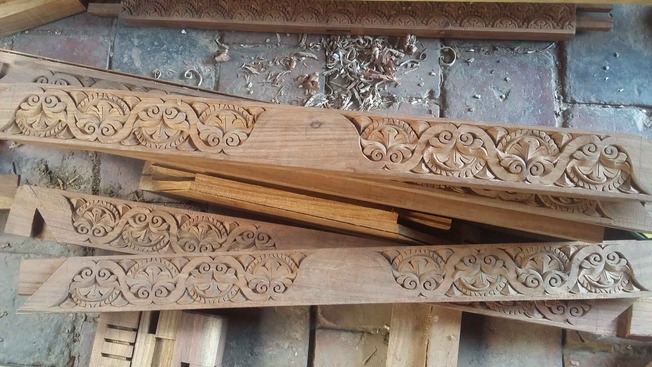A Living Newar Tradition
Wood carvings of Nepal are created by the Newar, the “old people” of Kathmandu Valley who grace traditional architecture of Nepal since the 2nd century. The oldest wood craft can be found at Changu Narayan temple in Bhaktapur, believing that the craft was already applied during the Licchavi period (300-879 AD).
Heritage sites, which were built during the Malla period (13th to 18th century), bare witness of the beautiful, old wood carvings and can still be admired today thanks to conservation efforts. Through the involvement of the youth, Newars are successful in passing the craft to younger generations, ensuring this age old tradition live on.
The Artisan's Dilemma
The Newari language has a rich vocabulary that includes wood carving terms, giving each detail of the craft a specific name. The carving has to be very precise in order for the details and patterns to fit together as the craftsmanship uses neither nails nor glue.
The craft is passed down in family businesses, taking the younger generation more than 10 years to perfect their carving skills. Using mostly traditional tools, the process of creating wood carvings stayed almost unchanged.
However, most family businesses need to turn to commercial pieces, creating Newar-art-inspired furniture and souvenirs for paying customers. The majority of these products go overseas, making wood carvings one of the biggest export trades of Nepal. In many of these new items the true symbolism of the ancient Newar art is lost or even mixed with symbols of other Asian cultures. The conservation of old and existing wood carvings is not lucrative enough.
The purpose and process in creating these masterpieces are filled with devotion, artisans plant a piece of themselves in them. Most of the time it is hard for them to part with it, creating a dilemma between passion and profession.


